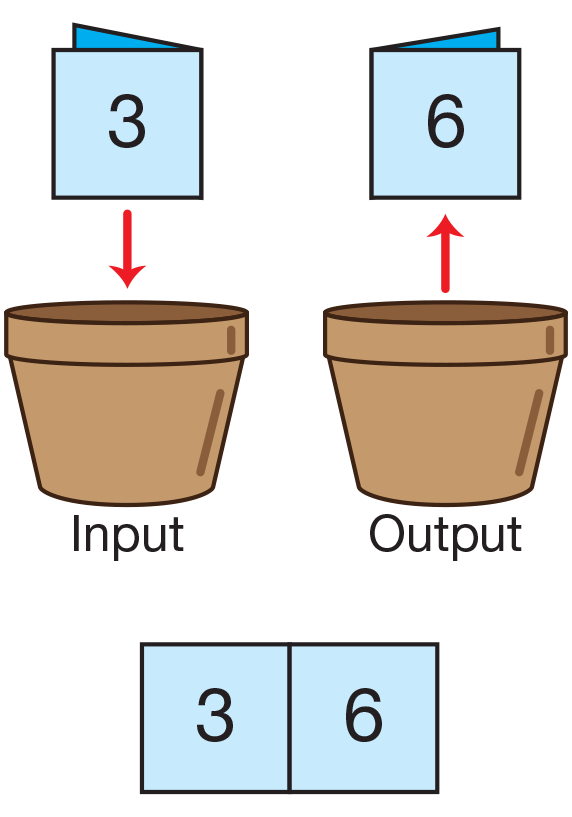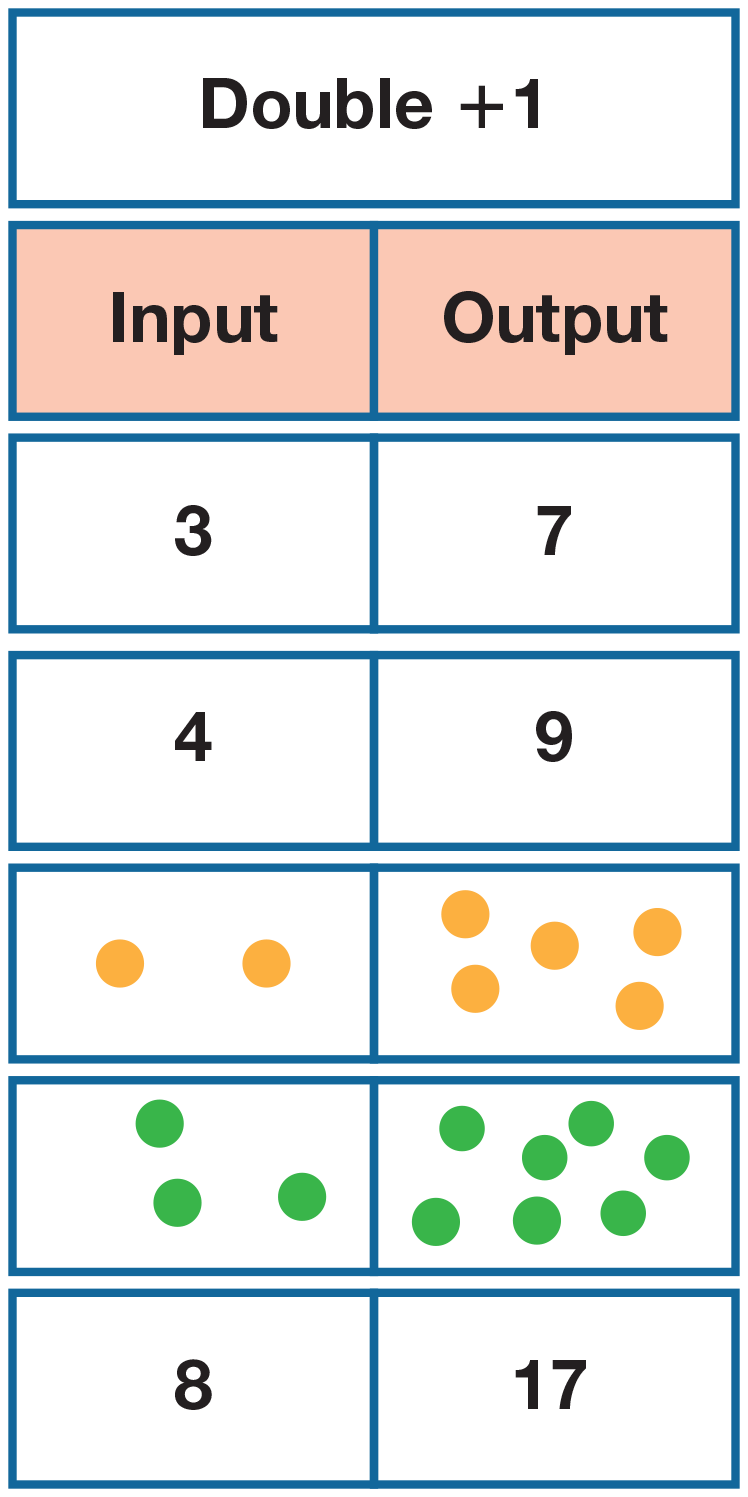Use Doubles
Est. Class Sessions: 2Developing the Lesson
Part 1: Think about Doubling
Read Two of Everything. Show students the cover of the Two of Everything book by Lily Toy Hong.
Ask:
Read the story aloud pausing to emphasize the changes in the story and answer students' questions.
Once you are done reading, ask:
Build a Doubles Rule Machine. Show students the magic pot you prepared. Tell students to pretend that this pot is a magic pot. Place a train of 3 connecting cubes in the pot. Pull a train of 6 six connecting cubes out of the pot. Fold one of the rule machine rows you prepared in half. Write 3 on the left side or "input" side and 6 on the right side or "output" side. Show students the 3 and place it in the pot.
Ask:
Remove the rule machine row showing students the 6. Hang the row on the board to make a rule machine. See Figure 2. Repeat this simulation with 4 cubes. Tell students that it is their turn to try. Give each student one of the rule machine rows you prepared showing an input that they will double. See Materials Preparation. Have 20 connecting cubes available for each student.
As students are doubling the input on their row, ask them to record the double on the right side of their row. Observe students' strategies for finding doubles and choose a few students to share their strategies. As students complete their rows, ask them to add them to the rule machine you have already started.
Build a Doubles +1 Rule Machine. Tell students that you found another magic pot. Gather the doubles +1 rule machine rows you prepared. See Figure 3. Fold the first row so only the 3 is showing. Without telling students the rule of the pot, place the row into the pot and remove it showing only the 7.
Ask:
Display the row on the board beneath an input/output title. Fold the second row so only the 4 is showing. Place the row into the pot and remove it showing only the 9.
Ask:
Display the row on the board as before. See Figure 6. Fold the next row so the 2 dots are showing. Place the row into the pot and remove it showing only the 5 dots. Display the row on the board with the others. Give each student one of the rows you prepared. Tell students to find the output using the input shown on the row. If they are not sure of the rule of the magic pot, tell them to wait until other students have displayed their rows on the rule machine on the board. As students complete their rows, ask each student to add his or her row to the rule machine.
Ask:
Write "Double +1" rule above the rule machine.















